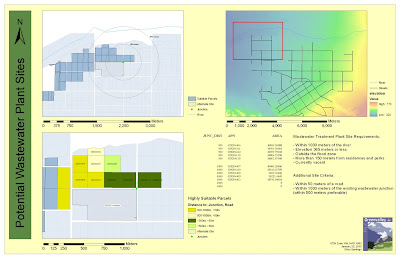
Saturday, January 30, 2010
Wednesday, January 27, 2010
Geocoding


Geocoding allows GIS users to visualize sets of specific locations. There are limitless applications and problem-solving possibilities. The map above, as one example, displays the fire stations of the City of Los Angeles. In this case, geocoding is used to determine which areas are least protected against fire, compared to the rest of the city (desirable coverage was deemed to be two miles by the cartographer). This information is important to urban planners, insurance companies, developers, and manufacturing plants, especially those dealing with flammable materials.
Without the ability to geocode, it would be much more difficult to answer the same question. After acquiring an accurate map, someone would have to physically find and individually plot the locations of each fire station in Los Angeles. Then, using a drafting compass, the cartographer would have to draw circles (using a radius converted from two actual miles) around each point. This entire process is very time-consuming. Fortunately, the GIS geocoding process feeds off of previously collected data and produces a cleaner, more dynamic map in a matter of minutes.
The map above reveals that most of the city is within two miles of a fire station. The areas of the city that are outside of this range also lack major roads, most likely indicating sparsely-concentrated populations. There are, however, some possible complications with the data on this map. Just as some of the station coverages extend beyond the city boundaries, the coverages of stations in other cities may also cross into Los Angeles. If this occurs in the seemingly “uncovered” areas of the city, then undercoverage is currently exaggerated. Furthermore, supplementary information about population density, local traffic, and vegetation would greatly benefit this map.
Tuesday, January 19, 2010
Monday, January 11, 2010
Subscribe to:
Comments (Atom)

